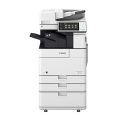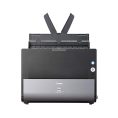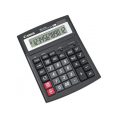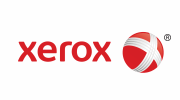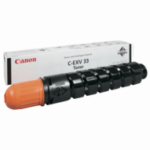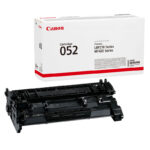Content
This strategy is difficult hft trading software due to its high barriers to entry and steep competition. Some studies show that after introducing high-frequency trading, bid-ask spreads decreased. Firms have spent millions of dollars laying fiber optic cable to the nearest exchanges. The SEC found that the reason for the crash was a hedge fund selling millions of dollars of stock. Algorithms saw the directional pressure and started selling off shares as well.
Unlock Stock Market Opportunities with Religare Broking
I don’t want to compete with microsecond executions or high-tech software. I say this often … You have to fill your knowledge account before you can fill your bank account. These books https://www.xcritical.com/ are great for understanding HFT and the rest of the market as a whole.
What Is a High-Frequency Trading Algorithm?
After turning my blog into a full-time online business, I now teach others how to do the same because financial freedom doesn’t need to be just a dream. Keeping detailed records of your crypto transactions and reporting them accurately is crucial to avoid paying tax penalties. I have to include “Reminiscences of a Stock Operator” by Edwin Lefèvre. I recommend this book to anyone looking to learn more about the stock market. It’s a great inside look at the mechanics of the market and crowd psychology. If your goal in life is to be a high-frequency trader, go for it.
What is the impact of latency in HFT?
- That being said, it might be challenging for retail traders to navigate HFT.
- After this event, the SEC made new rules called circuit breakers.
- It presents an enticing prospect of swift profits and rapid transactions but is fraught with challenges that can seem insurmountable.
- This strategy also places smaller investors at risk and is not conducive to long-term investing.
It has benefits, including better price discovery and greater liquidity, but it also has drawbacks and hazards. Fostering a fair and effective trade environment requires striking a balance between market integrity and technical improvements. Additionally, regulators are increasing their monitoring efforts to detect any suspicious activities or unfair advantages gained through HFT in the cryptocurrency market. High-frequency trading (HFT) is typically done by large institutional traders and proprietary trading firms rather than individual retail traders. These entities use advanced algorithms and high-speed trading systems to execute a large number of trades within very short time frames. The algorithms used by HFT are designed to monitor multiple markets and asset classes in real-time, searching for even the slightest price discrepancies.
How Does High-Frequency Trading Affect the Market?
In conclusion, high-frequency trading (HFT) in the cryptocurrency market has both its advantages and disadvantages. Before engaging in HFT in the cryptocurrency market, it’s crucial to carefully consider these advantages and disadvantages. They are engaged in various trades in a very short period; literally in millionths or billionths of a second, making them market makers. Being market makers is a big deal because it helps keep the financial market running smoothly. Expert traders develop algorithms that are built to detect trends and other trading signals.
As an active participant in the cryptocurrency markets, you must stay informed and adapt to the changing landscape of HFT in this space. The future of HFT in cryptocurrencies remains uncertain, as regulations continue to be implemented to ensure fair and transparent markets. A crypto enthusiast who also trades on the side, I like to review brokers and their features too. One of my enlightenment is finding the right broker as the fundamental factor of a comfortable trading experience. In 2014, a publication reported how some former economists from the Commodity Futures Trading Commission (CFTC) studied high-frequency trading companies for two years. They found that most of the money made by these companies went to just a few of them because the market works in a way where the winners take the most.
The same cryptocurrency could have a different price on different platforms. Bitcoin, for example, could cost $27,260 on one exchange and $27,220 on another. Traders can use HFT to detect, exploit, and profit from these differences.
This complexity, coupled with the proprietary nature of HFT strategies, contributes to a lack of transparency, or opacity, in the financial markets. Such opacity can obscure true market behaviors and pose significant challenges for regulators seeking to ensure market integrity and protect investors from unfair practices. One of the most significant advantages of high-frequency trading (HFT) is reduced trading costs. These reduced costs can translate into significant savings for institutional investors, who often deal with large volumes of securities.
While not HFT in the strictest sense, EAs can swiftly respond to market conditions, opening and closing positions within seconds. Taking advantage of small price differences in the market depends on speed and automation. HFT traders execute trades at breakneck rates in an attempt to capitalise on these transient chances.
These algorithms analyze market data and execute trades at lightning-fast speeds, sometimes in microseconds. High-frequency trading (HFT) refers to a trading strategy that relies on high-speed computers and complex algorithms to execute many trades in a fraction of a second. It is characterised by its lightning-fast execution, often measured in microseconds, and the ability to analyse vast amounts of market data in real-time.
The content of Coin Insider does not constitute any type of investment advice. The Securities and Exchange Commission (SEC) found that a big trade in a specific futures contract set off a chain reaction among high-frequency traders. One computer program’s fast selling led to another, like a financial domino effect. HFT firms always ensure there are enough buyers and sellers in the market.
Thanks to HFT traders, exchanges gain additional liquidity providers. This is why they often offer better trading fees to HFT traders. Market making is one approach that is commonly used by institutional traders who speculate on the spread. They use large capital to place both bids and asks in the same market. That allows them to benefit from the entire spread, which increases liquidity. Cryptocurrency trading platforms might collaborate with multiple market makers to provide liquidity, allowing the market to stay in good condition.
Some individual company stocks were sold for way less than their actual value, like a penny or $100,000, which was not supposed to happen. Don’t go into the markets assuming you can make a set amount of money. In the early 2000s, brokers filled orders in a couple of seconds. Grab “The Complete Penny Stock Course” to take your first step in your day trading education. Recently we’re seeing more activity in the foreign exchange markets. It’s estimated that 50% of all market activity is computer trades these days.
However, proximity to major exchanges and data centers can offer advantages in reducing latency and execution speed. The cost of entering the world of high-frequency trading varies significantly depending on your strategy and objectives. This amount covers out-of-pocket expenses to third parties and excludes any salary costs. However, if your goal is to compete with the largest HFT firms, engaging in various HFT strategies, a more realistic estimate might be around $20 million. High-frequency trading (HFT) is primarily the domain of professional traders and financial institutions.

